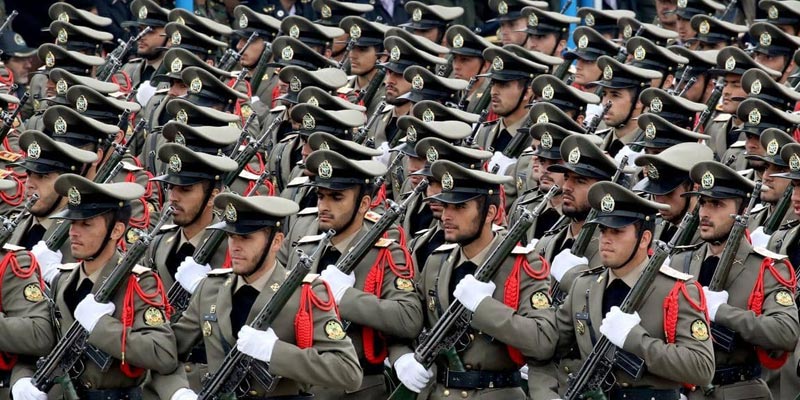July 24, 2020

In a report on the Iranian military, the Pentagon says the Iranian armed forces are improving—and its missiles, drones and naval forces in the Persian Gulf provide a serious challenge—but the Pentagon dismisses Iran’s air and ground forces as decidedly third-rate.
The 120-page report, “Iran Military Power,” was issued November 20 by the Defense Intelligence Agency (DIA), which has been issuing a series of reports on the armed forces of US adversaries.
The report, however, contains no stunning revelations. It says the United States doesn’t even know how many fast attack boats the Pasdaran have, although fears about them swarming to attack a large US warship in the Persian Gulf have long been a major US concern.
The report does not rate individual Iranian weapons systems. It is dismissive of Iran’s Air Force and Ground Force, saying they are stuck with mostly old weapons left over from the Shah’s armed forces. The half-century-old US-made F-4 Phantoms still remain “Iran’s primary attack aircraft.” The report says that when the UN ban on countries selling weapons to Iran expires next October, it expects Iran to start buying major weapons, especially planes and tanks, from Russia and possibly China.
As for all those “new” warplanes that Iran keeps unveiling, the DIA says, “Iran aims to be able to produce a modern jet aircraft but is unable to do so without significant foreign assistance. Iran has displayed what it claims are domestically built fighter aircraft, including platforms with low-observable [stealth] technology, but these have been modifications to existing airframes or mock-ups of aspirational designs.”
As for Iran’s heavily-touted fleet of drones or unmanned aerial vehicles (UAVs), the report sees them as a serious threat but says Iran can’t build them without getting parts from abroad. “Despite advances in its UAV manufacturing capabilities, Iran remains reliant on Western manufactured engines and components to support its UAV production. Iran is developing a domestic UAV engine but is struggling with quality issues.”
The DIA says, “Iran’s deterrence is largely based in three core capabilities: ballistic missiles capable of long-range strikes; naval forces capable of threatening navigation in the Persian Gulf and Strait of Hormuz; and unconventional operations using partners and proxies abroad,” referring to the recruitment of foreigners to fight abroad in militias on Iran’s behalf.
However, the report says that while Iran has accurate short-range missiles, “Iran’s longer-range systems, such as the Shahab-3, are generally less accurate.”
The Islamic Republic heavily touts its expanding Navy and the Navy’s increasing number of long-distance deployments. The DIA, however, is not impressed. It says those long-distance deployments are “largely symbolic” because they are “often plagued with maintenance issues.”
The report reveals that Iran has drastically cut its military budget for this year as a result of the US sanctions severely reducing Iran’s oil revenues. Last year’s official military budget was the equivalent of $27.3 billion or 6.1 percent of GNP. But this year’s budget has so far been cut by a quarter to $20.7 billion percent or just 3.8 percent of GNP, the report says.
But more than a third of that budget, 34 percent, is consumed by pension payments. Some 29 percent goes to the Pasdaran and 17 percent to the Law Enforcement Forces (which are part of the military in Iran) and a mere 12 percent goes to the regular military services. The remaining 8 percent goes to other expenses.
In a rebuke to many conservative writers in the United States, the report says outright: “Iran has no nuclear weapons and,.. without a sufficient source of weapons-usable fissile material, Iran cannot produce a nuclear weapon.”
